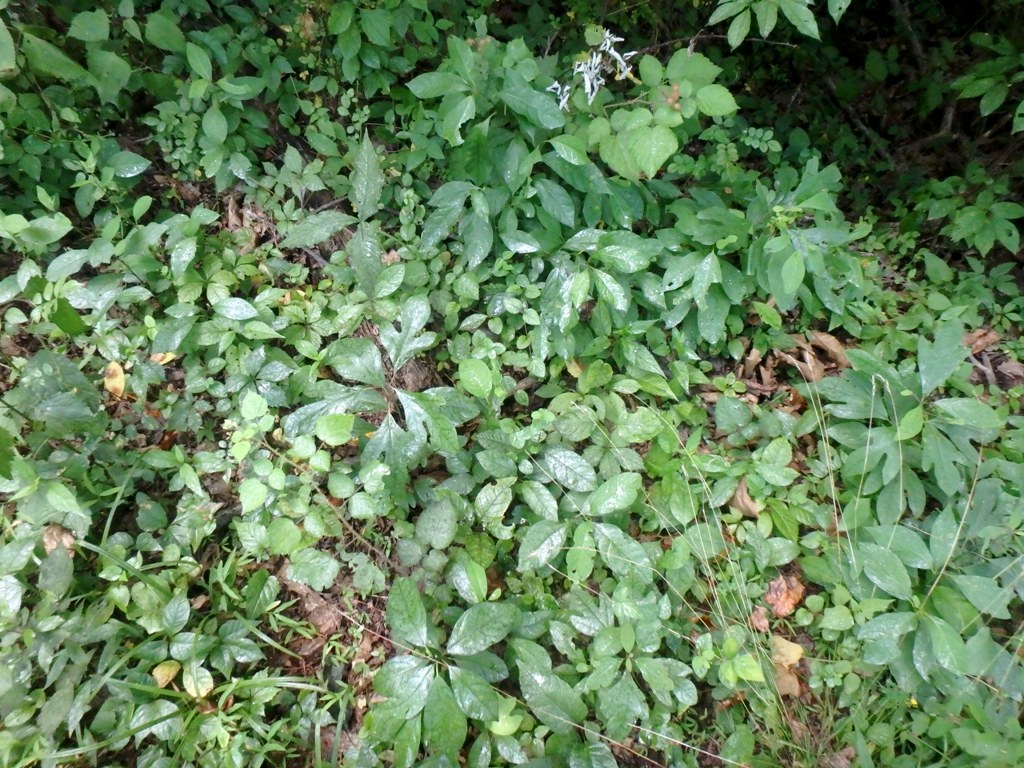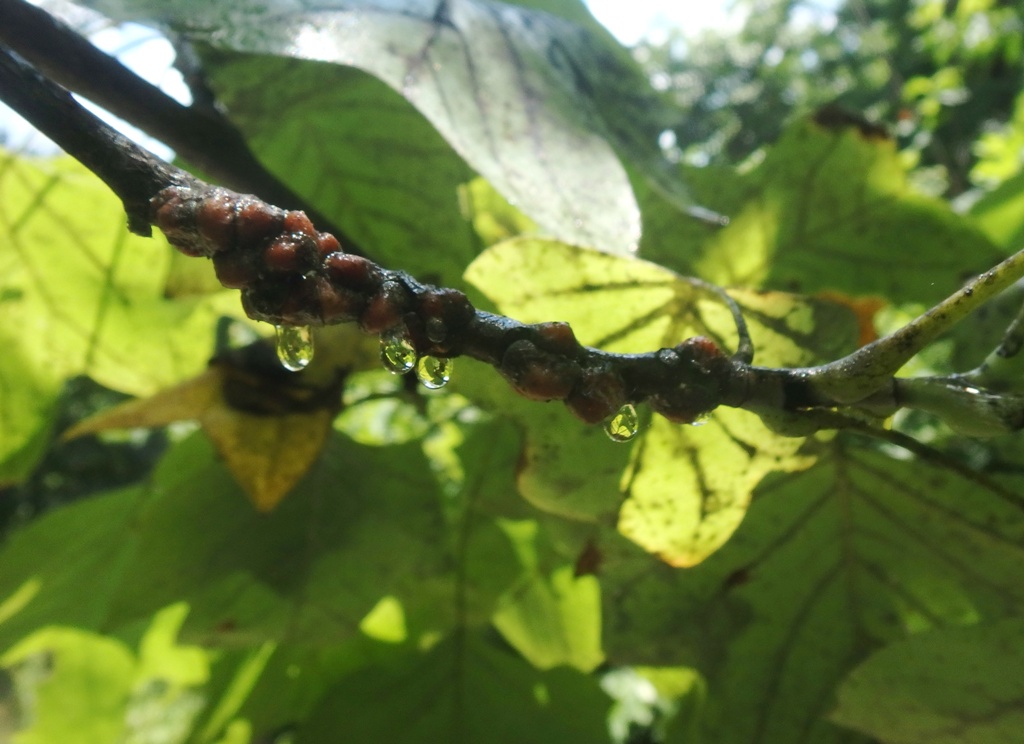Mariton: Scale on the Tuliptrees
by Tim Burris, Preserve Manager

Shiny leaves indicate sap and “honeydew” from scale insects.
If you have walked at Mariton recently you have noticed the shiny leaves along the trails. I noticed the “honeydew” on leaves at the beginning of June and traced it back to scale on the Tuliptrees (Liriodendron tulipifera). Dan Barringer recently talked about the effects of scale on Tuliptrees in one of his Field Notes.

The scale and honeydew on a Tuliptree twig. Note the Black Sooty Mold along the leaf veins.
This has happened before at Mariton, about twenty years ago. I remember the honeydew and Black Sooty Mold on the leaves in the understory. I don’t remember that we knew the insect, or pest causing the honeydew at that time. Now, because of Hurricane Sandy, there are several Tuliptree branches low enough to examine and I can readily see the scale that is causing the impact.
Twenty years ago, there wasn’t any long term effect on the trees, shrubs or plants. There was some dieback of herbaceous plants (because the mold blocked photosynthesis), but it wasn’t long term. If we have a good rain event it will wash the honeydew, and even the Black Sooty Mold from the leaves. Even during the little rain events we had a few weeks back, there was some cleansing of plants. So, hopefully we get a good soaking rain in the next week or two. While I am not overly concerned, I am monitoring the trees and plants. With all the new invasive and destructive insects proliferating our area in recent years, it pays to be observant.
